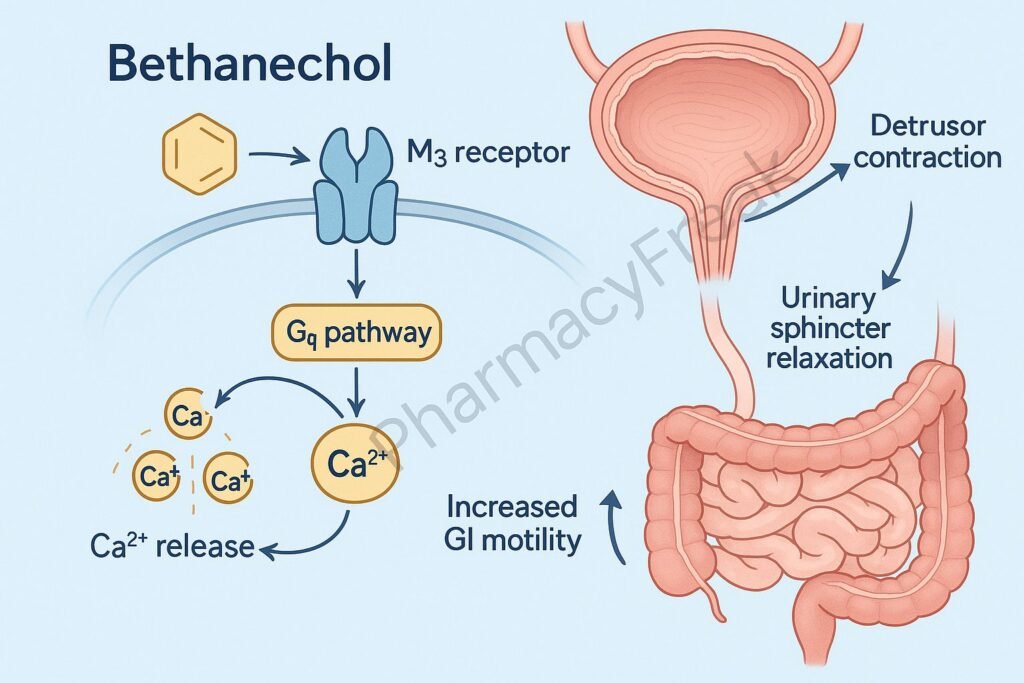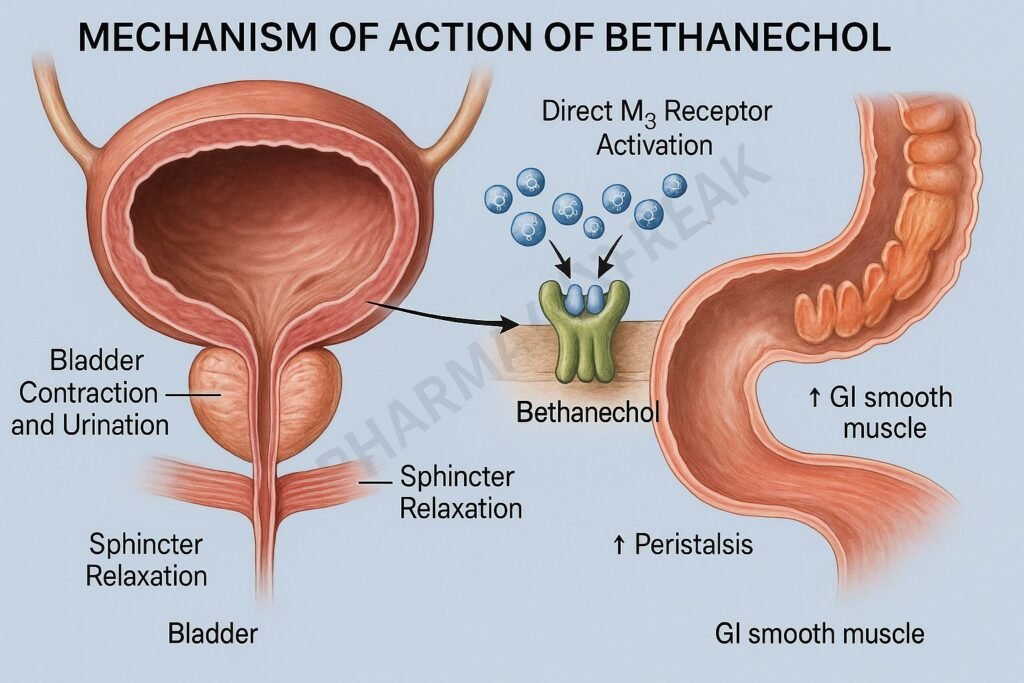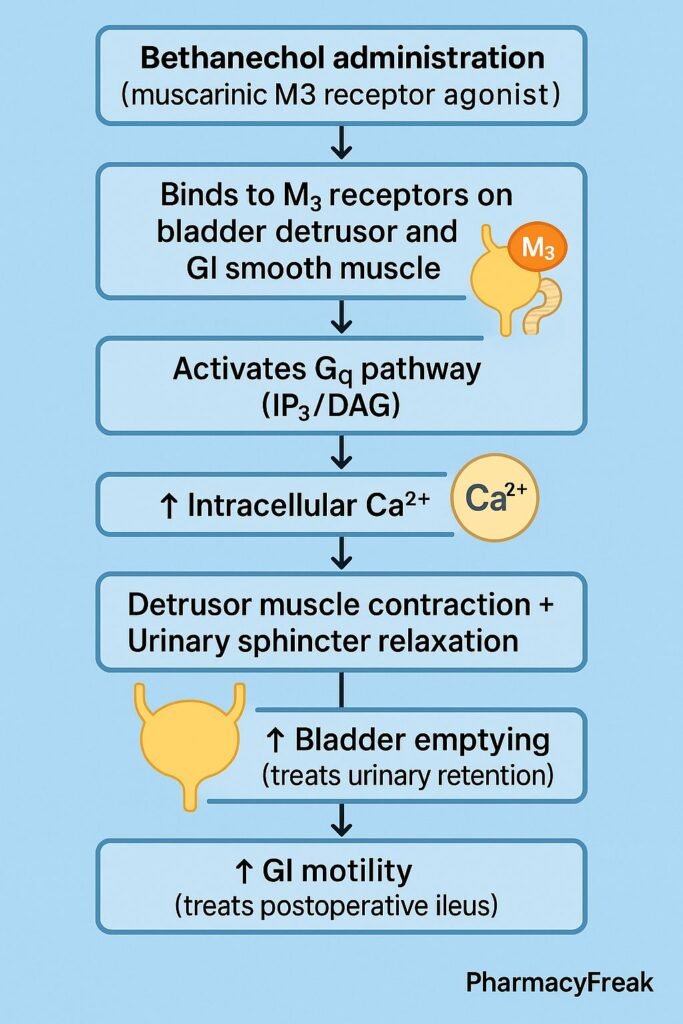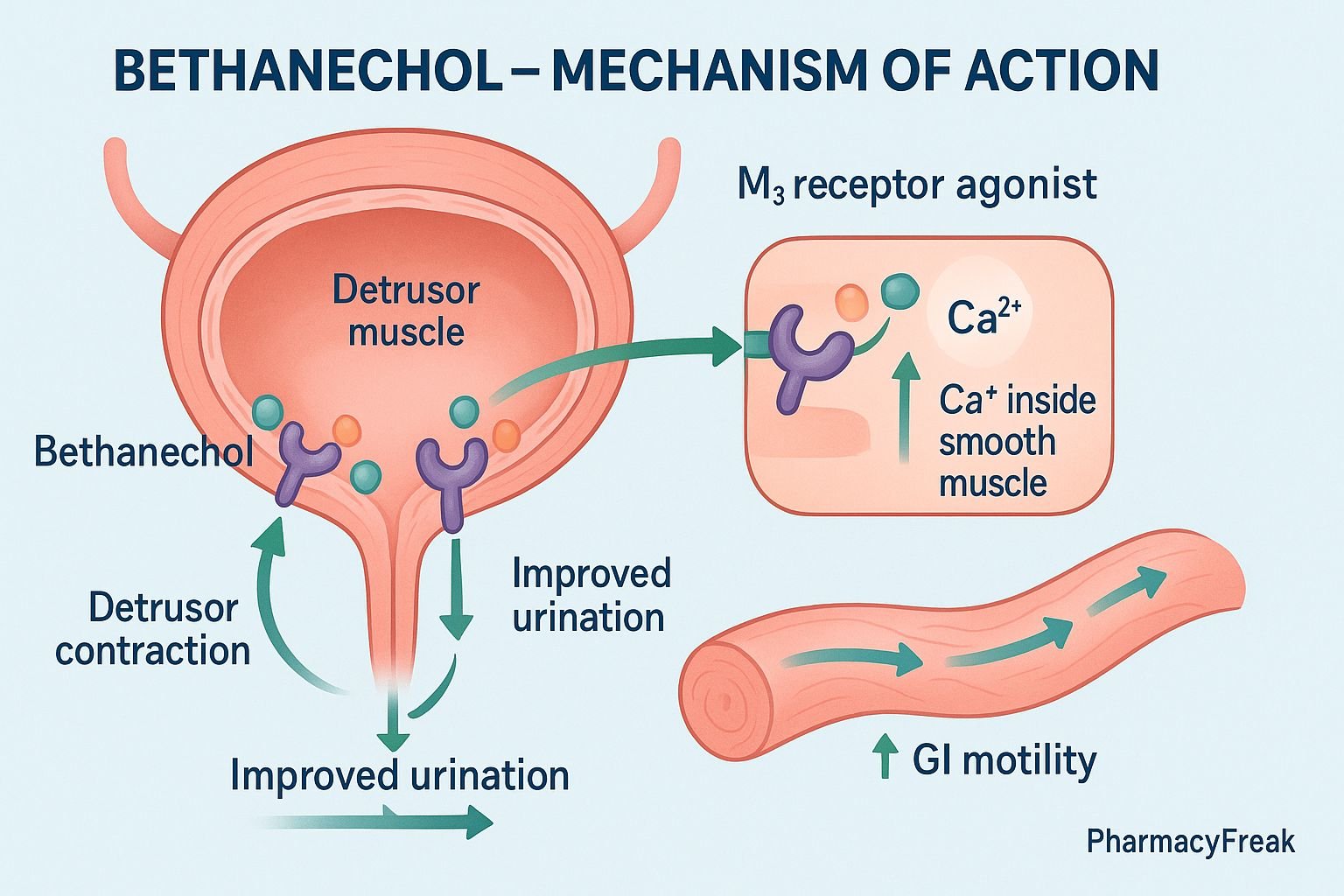Table of Contents
Introduction
Betahistine is a histamine analogue used primarily in the treatment of Meniere’s disease, vertigo, and vestibular disorders. Its therapeutic effects involve improving microcirculation in the inner ear, enhancing vestibular compensation, and reducing endolymphatic pressure.
Betahistine works through a dual mechanism: H1 receptor agonism (weak) and H3 receptor antagonism (strong), both contributing to symptomatic relief in vertigo and balance disorders.


Mechanism of Action (Step-wise)
1. H1 Receptor Agonism in Inner Ear Vasculature
- Betahistine acts as a weak agonist at histamine H1 receptors located on the blood vessels of the stria vascularis in the inner ear.
- This causes vasodilation and increases capillary permeability.
Effect:
- Improved inner-ear microcirculation
- Enhanced endolymphatic drainage
- Reduction in vertigo attacks
2. H3 Receptor Antagonism (Primary Mechanism)
- Betahistine is a strong antagonist of presynaptic H3 receptors, which normally inhibit histamine release.
- Blocking H3 receptors increases the release of:
- Histamine
- Acetylcholine
- Serotonin
- Noradrenaline
Effect:
- Increased neurotransmitter levels in the vestibular nuclei
- Improved vestibular compensation
- Enhanced central nervous system adaptation to balance disturbances
3. Reduction of Endolymphatic Pressure
- By improving blood flow and endolymph absorption, betahistine helps normalize endolymphatic fluid pressure, a key factor in Meniere’s disease.
Effect:
- Decreased episodes of vertigo
- Reduced tinnitus
- Reduced hearing fluctuation
4. Enhanced Vestibular Compensation
- H3 blockade increases neuronal firing in the vestibular nuclei, promoting central compensation after unilateral vestibular loss.
- This accelerates recovery from vertigo and improves balance.
5. Summary of Mechanism

| Mechanism | Receptor | Effect |
|---|---|---|
| Vasodilation | H1 agonism | ↑ Blood flow in inner ear |
| Neurotransmitter release | H3 antagonism | ↑ Histamine, ACh, serotonin, norepinephrine |
| Pressure reduction | Inner ear circulation | ↓ Endolymph pressure |
| Vestibular compensation | CNS effect | Faster symptom recovery |
Pharmacokinetics
- Absorption: Rapid and complete (oral)
- Metabolism: Extensively metabolized into 2-pyridylacetic acid (inactive)
- Excretion: Mainly via urine
- Half-life: 3–4 hours
Clinical Uses
- Meniere’s disease
- Recurrent vertigo
- Vestibular neuritis (adjunct)
- Tinnitus associated with inner-ear imbalance
- Post-labyrinthectomy vestibular compensation
Adverse Effects
- Headache
- Nausea
- Gastric irritation
- Bloating
- Rare allergic reactions
- Caution in peptic ulcer disease (histamine-like effect)
Contraindications
- Pheochromocytoma
- Active peptic ulcer disease
- Severe asthma (use cautiously)
Comparative Analysis
| Feature | Betahistine | Cinnarizine | Prochlorperazine |
|---|---|---|---|
| MOA | H1 agonist + H3 antagonist | Calcium channel blocker + antihistamine | Dopamine antagonist |
| Sedation | Minimal | Moderate | High |
| Primary use | Meniere’s disease | Vertigo, motion sickness | Vertigo, nausea |
| Effect on compensation | Improves | Delays | Delays |
MCQs
1. Betahistine acts primarily as a:
a) H2 antagonist
b) H3 antagonist
c) H1 antagonist
d) Dopamine agonist
Answer: b) H3 antagonist
2. H1 receptor agonism by betahistine leads to:
a) Vasoconstriction
b) Vasodilation in the inner ear
c) Reduced neurotransmitter release
d) Increased endolymph production
Answer: b) Vasodilation in the inner ear
3. The improvement in vestibular compensation is due to increased release of:
a) Dopamine
b) GABA
c) Histamine and acetylcholine
d) Melatonin
Answer: c) Histamine and acetylcholine
4. Betahistine is most commonly used for:
a) Seizures
b) Meniere’s disease
c) Hypertension
d) Depression
Answer: b) Meniere’s disease
5. Betahistine should be used cautiously in:
a) Hypothyroidism
b) Peptic ulcer disease
c) Renal stones
d) Hyponatremia
Answer: b) Peptic ulcer disease
FAQs
Q1. How long does it take for betahistine to work?
Most patients see improvement in 2–4 weeks, with full effect in 2–3 months.
Q2. Does betahistine cause sedation?
No, unlike other vertigo medications, it has minimal sedative effects.
Q3. Can betahistine be used long-term?
Yes, it is commonly used for months in chronic Meniere’s disease.
Q4. Does betahistine improve hearing?
It may reduce fluctuations but does not reverse established hearing loss.
Q5. Is betahistine safe in asthma?
Use with caution—it can increase airway reactivity in severe cases.
References
Goodman & Gilman’s Pharmacological Basis of Therapeutics
Katzung Basic & Clinical Pharmacology
Tripathi Essentials of Medical Pharmacology
Harrison’s Principles of Internal Medicine

I am pursuing MBA in pharmaceutical management from NIPER Hyderabad with a strong academic record and proven success in national-level pharmacy entrance exams. I secured AIR 61 in NIPER 2024 (MS/M.Pharm) and AIR 27 in NIPER MBA, along with AIR 147 in GPAT 2024 and AIR 907 in GPAT 2023. I also achieved AIR 6 in AIIMS CRE-2025 for Drug Store Keeper and was selected as a Pharmacist (AIR 61) for ESIC. Additionally, I was the Runner-Up in Round 2 of the EY Case Study Competition.
At PharmacyFreak.com, I aim to guide future pharmacists through expert content, exam strategies, and insightful resources based on real experience and academic excellence.
Mail- harsh@pharmacyfreak.com
